Chinese Laundry Site Artifacts Gallery
Discover artifacts found at the Chinese Laundry site in Stockton.
Food
There were many brown and green glazed stoneware containers found that would have held preserved foods brought from China, such as pickles, ginger, bean curd, oil rice wine, and soy sauce.
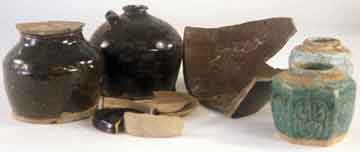
Sharing food is very important in Chinese culture. The laundry contained many pieces of Chinese bowls, cups, spoons and food remains such as pork bones. This tells us that eating in traditional Chinese ways was very important to the laundry workers.
Tea
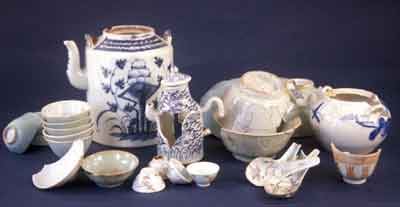
Drinking tea was important in many Chinese households. The tea was made in teapots and drunk from small, porcelain cups without handles that were brought from China. Tea drinking was also very important to Euro Americans in the 19th century, who sometimes used fancy teapots and matching cups and saucers. Teapots, like the ones found at the laundry, were sometimes used to brew traditional Chinese medicine from herbs.
Medicine
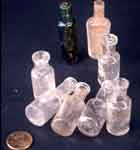 These little vials once contained Chinese medicine. Bottles for both Chinese and Euro American medicine were found at the laundry site. One of the artifacts was a bottle stuffed with preserved herbs and the remains of five crows. This bottle would have been filled with alcohol to make a type of traditional Chinese medicine used by the laundry workers.
These little vials once contained Chinese medicine. Bottles for both Chinese and Euro American medicine were found at the laundry site. One of the artifacts was a bottle stuffed with preserved herbs and the remains of five crows. This bottle would have been filled with alcohol to make a type of traditional Chinese medicine used by the laundry workers.
Traditional Chinese medicine was very different from Euro American medicine in the 19th century. The artifacts tell us that the laundry workers tried Euro American medicine, but that they also liked to use familiar remedies from China.
Toys
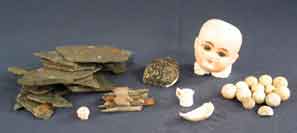 Children in the 19th century played with toys, including dolls, marbles, and cast-metal figures. The heads, legs, arms and dolls were often sold separately in the 19th century. Then they were sewn on to a cloth body to be formed into a doll.
Children in the 19th century played with toys, including dolls, marbles, and cast-metal figures. The heads, legs, arms and dolls were often sold separately in the 19th century. Then they were sewn on to a cloth body to be formed into a doll.
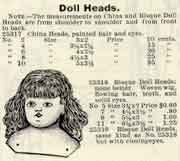
In the latter part of the century, more and more people bought toys from stores or catalogs, rather than making them themselves. The toys above are from families who lived near the laundry. We did not find very many toys at the Chinese laundry, which may suggest that children did not live at the Chinese laundry site.
Writing
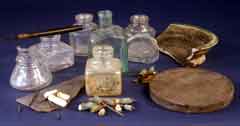 Shown in the photo are parts of Chinese ink stones. Chinese workers at the laundry made ink by rubbing water into the stone. In the U.S. in the 19th century, most people wrote using bottles of ink and pens with nibs.
Shown in the photo are parts of Chinese ink stones. Chinese workers at the laundry made ink by rubbing water into the stone. In the U.S. in the 19th century, most people wrote using bottles of ink and pens with nibs.
Paper was expensive so children wrote their lessons on slate boards with slate "pencils". Afterwards, the boards could be wiped clean and used again.
The artifacts told us that the Chinese laundry workers wrote with Euro American inks and pens, but they also liked to use traditional Chinese ink and brushes.
Lighting
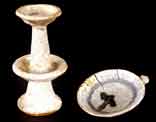
 Archaeologists found part of a traditional Chinese oil lamp. They also found the glass base of an oil lamp that was common in non-Chinese American homes in the 19th century. The oil lamps burned sperm-whale oil, other animal fats, and kerosene. The lamps became covered in soot and had to be cleaned almost every day. When gas and (later) electricity were introduced, lighting the laundry became much easier.
Archaeologists found part of a traditional Chinese oil lamp. They also found the glass base of an oil lamp that was common in non-Chinese American homes in the 19th century. The oil lamps burned sperm-whale oil, other animal fats, and kerosene. The lamps became covered in soot and had to be cleaned almost every day. When gas and (later) electricity were introduced, lighting the laundry became much easier.
Finding these lamps tells us that Chinese workers at the laundry used both traditional and Euro American technology to light their home.
Bones
Bones from archaeological sites tell us what people ate. At the Chinese laundry we found a great many bones from meat that had been butchered or cut up. Some of the meat came from cows, pigs and sheep, or from birds like chickens. We also found the bones of both freshwater and saltwater fish.
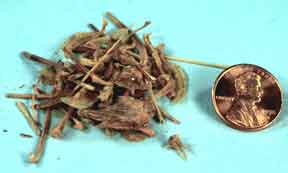 Most of the meat came from pork, which was traditionally very popular in China. The fact that the laundry workers ate so much pork tells us that they probably liked to eat food similar to what they did at home in China.
Most of the meat came from pork, which was traditionally very popular in China. The fact that the laundry workers ate so much pork tells us that they probably liked to eat food similar to what they did at home in China.
Bones not only tell us about the food people ate; the bones found on archaeological sites could also be from pets, farm animals, vermin like rats, or even from medicine. At the laundry, we found a bottle that contained the bones of cut-up crows. The crows, together with medicinal herbs, were probably steeped in alcohol to make a type of traditional Chinese medicine.
Bottles
We found many bottles that contained foods, medicine or alcohol drinks used by the Chinese laundry workers.
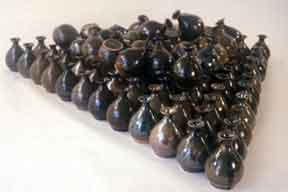
Some of the bottles contained either Chinese of Euro American wines or liquors. The workers at the laundry may have used them for cooking, or for relaxing with friends after work.
Many of the bottles found at the laundry site originally contained medicine called "bitters" that helped with kidney or liver problems. Once the medicine was taken, the workers reused the bottles to store bluing dye. This was a type of dye that was often added to washing to make clothes look whiter and cleaner.
Chinese factories in the U.S. used glass bottles to ship their products to Chinese communities throughout the country. At the laundry, a bottle was found with Chinese writing on the label, which once contained ginger beer made in San Francisco.
Visit the Sing Lee Chinese Laundry Exhibit
Archaeologists from Sonoma State University completed an exhibit of selected artifacts from the Chinese Laundry site. The exhibit is located in the lobby of The Hotel Stockton and is open to the public. Lobby hours are 11:00 a.m. to 8:00 p.m.
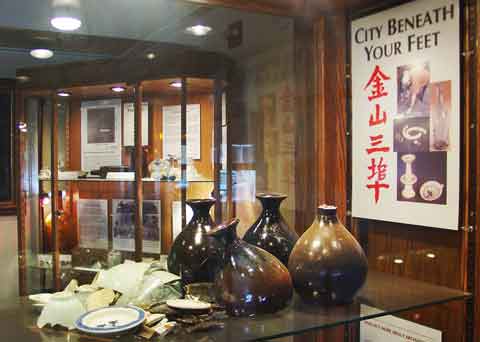
External Links
Sing Lee Chinese Laundry Exhibit at the Hotel Stockton contact Richard Faryl (209) 463-4381
This City of Stockton web page last reviewed on --- 5/12/2015
